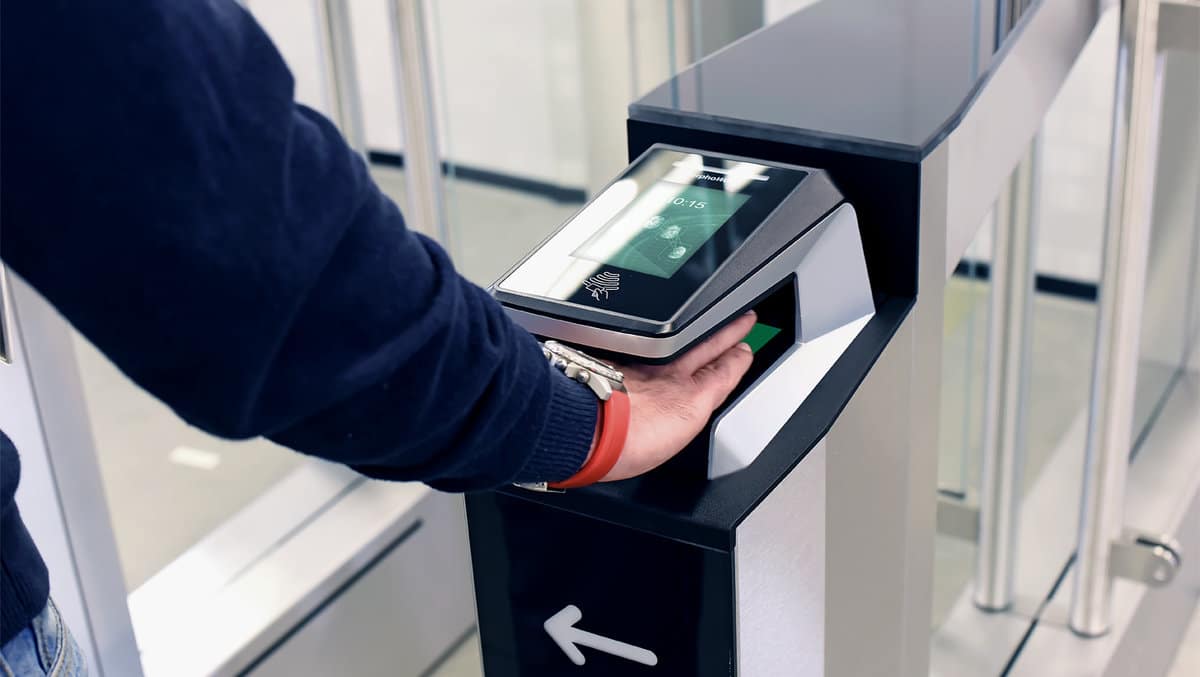Telecom & Technology Consulting

Not so long ago, retail consumers were introduced to the concept of self-checkout. Instead of a cashier scanning items and bagging them, you had the freedom to do it yourself.
New checkout experiences will soon enhance self-checkout. These are “contactless” systems powered by the latest computer vision and AI technologies.
Instacart, in collaboration with Amazon One, are implementing palm-recognition payment technology to over 500 Whole Foods locations across the country. Other retailers are experimenting with similar contactless systems.
The driving force behind these latest checkout systems is computer vision, or vision artificial intelligence (AI). At a high level, this form of AI allows computers to recognize images and handprints, with cameras that precisely identify specific grocery store/retail products and items.
Most major and mid-sized retailers are testing the viability of contactless payment systems. And what’s most enticing about them is their ability to recognize items without barcodes, which eliminates the time necessary for scanning. This is a magic formula for retailers, as they improve efficiency while cutting operational costs.
Contactless systems align with consumer behavior. A Gallup poll last year showed that approximately 13% of consumers use cash for their purchases. More so, 60% of shoppers foresee a cashless society in the U.S during their lifetime.
To be clear, the root of contactless systems is biometric payment technology. Biometric payments work like this: They first scan a body part of an individual to accurately recognize them, and then automatically accept the payment (the technology is connected to the shopper’s preferred payment method).
Biometric payment systems naturally raise privacy concerns. But like prior electronic payment systems, over time, consumers will become more comfortable with biometrics as the industry installs more safeguards. In one instance, MasterCard has already implemented a mechanism that immediately deletes a scan after the purchase is completed.
Yet whatever type of contactless systems you’re discussing, they all present a chicken/egg problem: While shoppers must embrace them, retailers have to actually install the systems in order for those shoppers to checkout with them.
Then there’s the age-old barrier to adoption challenge. The issue is that retailers have made million (even billion) dollar investments into their point-of-sale systems. How do they justify installing new checkout solutions that don’t require replacing the legacy systems all at the same time? At this time there’s no obvious answer.
All retailers can do is look to the future rather than strictly wondering how they can leverage past investments. An exciting option is called Veeve, which is a smart cart checkout system that uses cameras equipped with vision AI. This mechanism can sense what specific items are being placed in the cart.
An actual device, Veeve clips onto a store’s physical shopping cart, automatically scans each item that goes into the cart, and finally accept payments when the order is complete. According to Veeve, the shopping bill increases by up to 15% when shoppers use the device. In short, more convenience equals more revenue for retailers.
Instacart is offering something similar to Veeve. In 2022, they launched Caper Cart, which employs a system of cameras and scales that are driven by AI. Like Veeve, consumers tally their purchase by placing items in the cart, which identifies the products that shoppers add or even remove.
Checkout systems like Veeve and Caper Cart provide added benefits beyond increased shopper convenience and higher sales. These are also tools that can transform the omnichannel shopping idea into a reality.
A sample use case: Consumers can enter their phone numbers to register for a retailer’s loyalty program, and the system will save their shopping history data that can be applied to online orders. In this way, contactless payment systems can truly unify the brick and mortar and online shopping experiences – something retailers have been striving for since the birth of the ominchannel concept.
Yet there’s still one more piece of the puzzle in order for everything to work as imagined: Retailers have to integrate contactless checkout systems in a manner that fits with how their employees already do their jobs. Otherwise, they’ll never see the aforementioned consumer adoption and increased sales.
Time will tell how quickly the retail world (and consumers) gets used to the idea of contactless payments that run on biometric technology. But we’re betting it’ll be pretty fast.
Remember, there was a time when the actual shopping cart with wheels was an innovation. So were credit cards, as were barcodes and scanning. We now accept those things as “normal”, and chances are we’ll feel the same about contactless checkout systems very soon. Retailers, get ready.